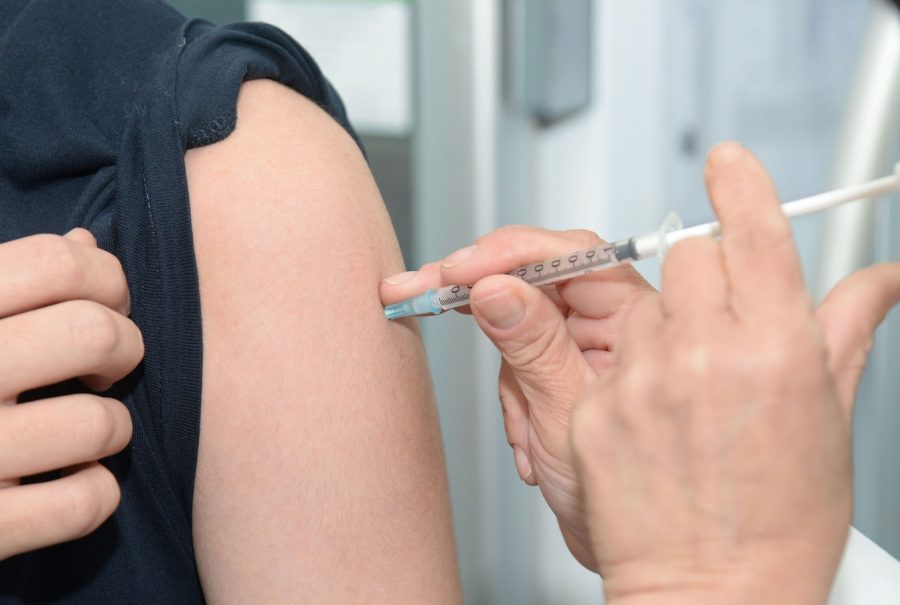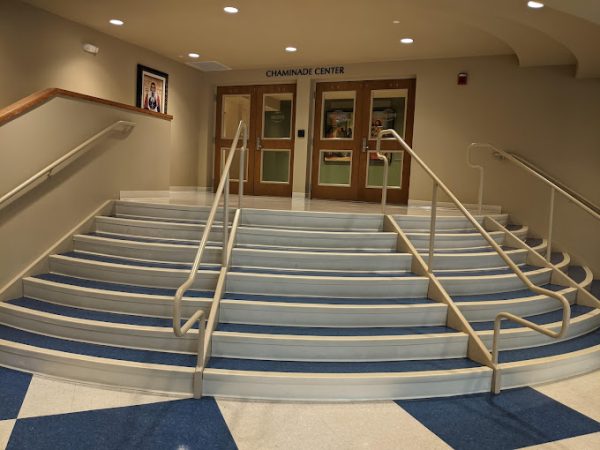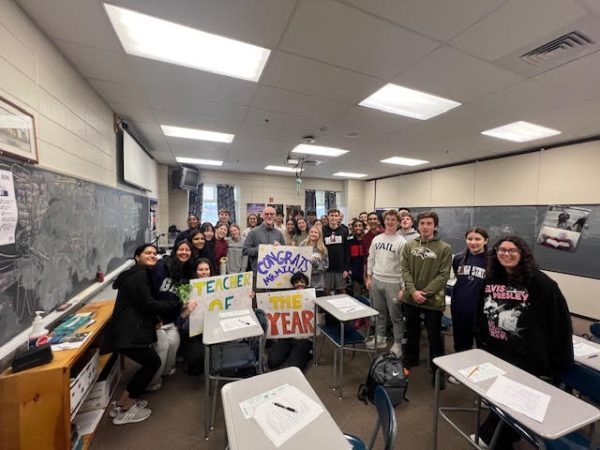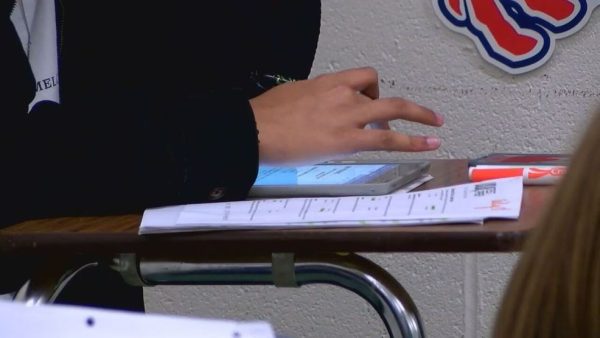COVID Vaccines Bring Hope to Students
Medical health experts are working hard to put an end to COVID-19 with the new vaccines, which are currently available for medical workers and people directly in contact with the virus. The vaccine is being given out in phases and will be available to the public soon. Both the Pfizer/BioNTech and Moderna COVID-19 vaccines are 91-95% effective and will help prevent the spread of the virus.
On December 11, The Food and Drug Administration approved the Pfizer/BioNTech COVID-19 vaccine for emergency use. This vaccine is for people aged 16 and older, and it requires booster shots spread 21 days apart. The Moderna vaccine was also approved by the FDA, one week later. Unlike the other vaccine, Moderna is only available for people 18 and older. This vaccine similarly requires booster shots, but spread 28 days apart.
“The first idea is that, when you get this vaccine injection, it signals the body to make antibodies and memory cells to fight the infection for later. So, that’s the basis of immunization vaccines. Now, interestingly, if you want to convey this message to your immune system, then you have to put the whole virus in for the body to react to it,” Dr. Amit Shrivastava said, from Buttermilk Falls Pediatrics. Since COVID is a Ribonucleic acid (RNA) virus, unless the entire virus goes in, the recipient can’t fall sick. That would defeat the purpose of a vaccine, so instead, they only inject a part of the virus, thus not infecting the patient, but building immunity.
“10-12 years ago, another technique developed was to take a part of the virus’ spike proteins, and recreate the spike protein artificially,” Shrivastava said. When the artificial spike proteins enter the body, it supposedly mimics the real virus protein. The “virus” turns the body’s cells into a factory, creating copies of itself, preparing the bodies’ antibodies to fight back.
“The third technique is AstraZeneca. Oxford University, England, was developing its vaccine this way. They make a copy of the RNA from the part of the virus and create a vector, conveying the virus particle inside,” Shrivastava said. To put it simply, they take the COVID virus and combine it with a weaker virus (like the cold), breaking down the initial virus. “This is called an Adenovirus, and the weak virus is put inside. The virus will multiply, releasing a part of the covid virus,” Shrivastava said.
“It’s really amazing how the Moderna vaccine works. When someone gets the two doses, the primary dose and booster dose, in two weeks you are already immune to covid. Even if you get it, it’s very subdued,” Shrivastava said. After the second dose, its efficiency goes up to 95%. This is very rare, and even the best vaccines made so far are only around 86 to 87% effective. Those vaccines have taken several years, while the first copy of the COVID-19 vaccine is already better—and was only created in 6 months.
Although it has felt like forever in this pandemic, it’s important to know that creating vaccines is not an easy task, according to Dr. Amit Shrivastava. It’s a miracle that the vaccine has been developed, and the virus can be properly contained now.
“The Center of Disease Control has advised that the first lot will be given to the most critically needed people. ICU doctors, nurses, and pulmonary specialists, people who are in contact with covid patients. The second lot will go to community physicians— like me, as well as nurses, firemen, and EMTs. The general population will probably not get the vaccine until July or August,” Shrivastava said. It’s only expected that those at the highest risk will receive the vaccine first, and then later to the majority population who are not directly in danger.
However, a new problem arises when the vaccine will take a long time for everyone who wants it to get it.
“The US population is around 330 million, so if you want to vaccinate everyone in the US, you have to produce millions of the vaccine— two doses for each person. Moderna said they will produce around 10-20 million a month and will eventually trickle down to people who are not in immediate danger.” Young people, for example, since the virus is usually not as serious for them, will receive the vaccine last. It will be distributed by priority, and could eventually take months into 2021 before everyone who wants the vaccine can get it.
Things will definitely take a long time to get under control, but it’s looking better as the new vaccine will be very effective and safe. Everyone is advised to get vaccinated, as even those who had the virus before are not completely safe from it, so one might as well get the vaccine in order to take the proper precautions. Workplaces and schools may reopen for hybrid sessions during 2021, and as long as people follow the CDC’s guidelines, then everyone can look forward to going back to their old lives, safe and healthy.
Hello, my name is Dia Shrivastava. This is my first year taking journalism and writing articles. Some of my hobbies are art, softball and video games....







